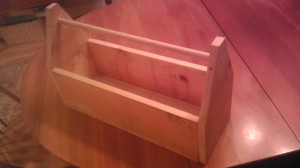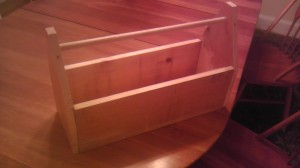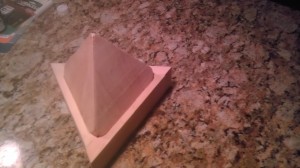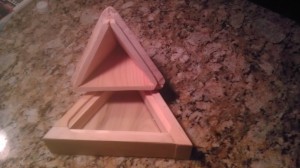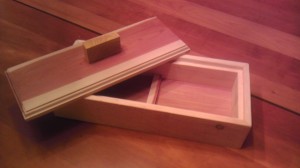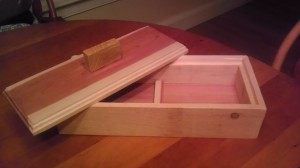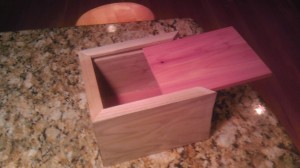March 16,
This one used no nails of screws, not that any in this whole series do, and attempts to get at an old-fashioned toolbox. The wood is scrap pine ad a one inch oak dowel. The end pieces were not flat, I had to use a plane to get them not to rock before I fastened them. The crowning accomplishment here, very small, is you will notice two small dark dots near the top of the ends by the dowel. These are smaller dowels which go through the larger dowel preventing it from turning or from sliding out to either side. That felt so technical.
The too box itself is a trifle too heavy to contemplate using. It would probably be better as a planter or a knick-knack aggregator. It’s up for give-away. A good sense of accomplishment though. It’s funny how basic basic things are.

